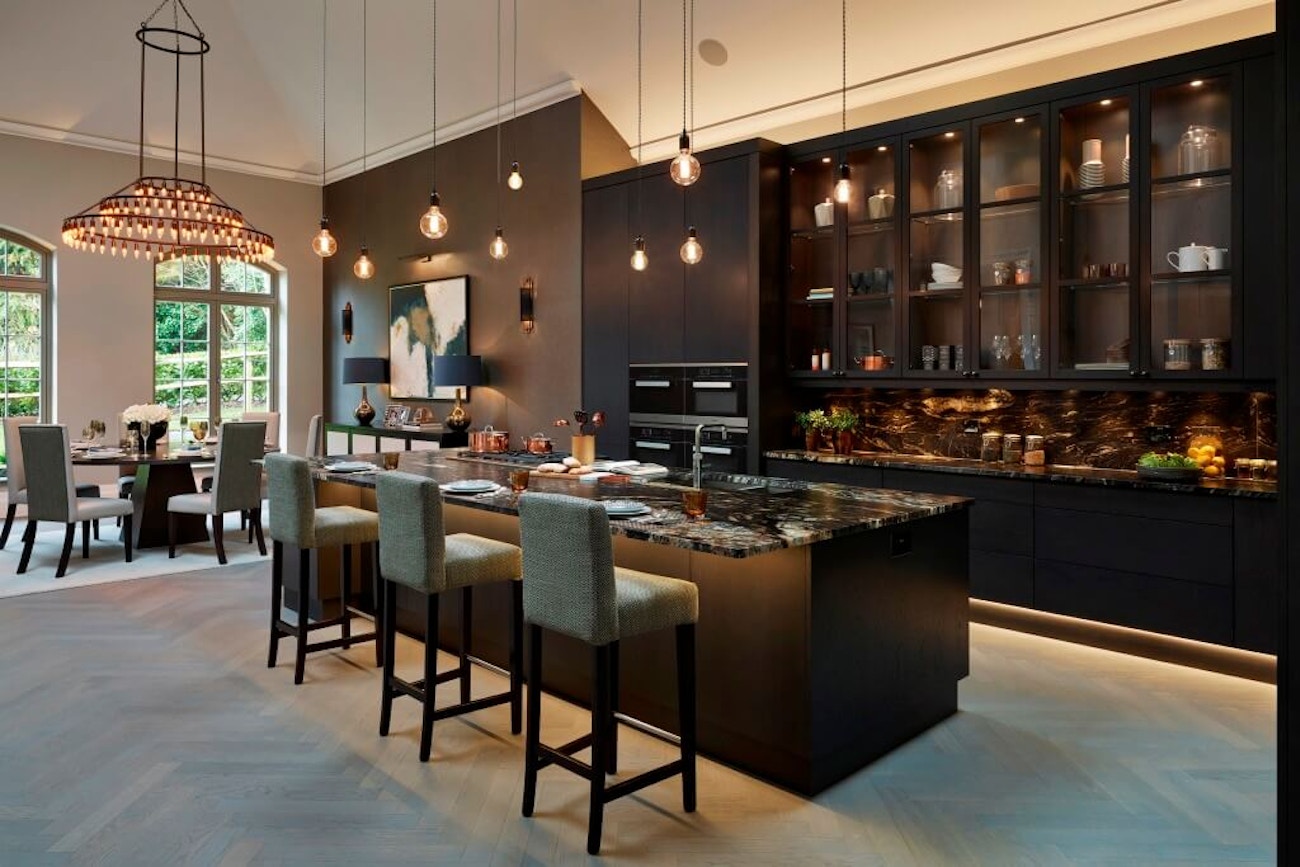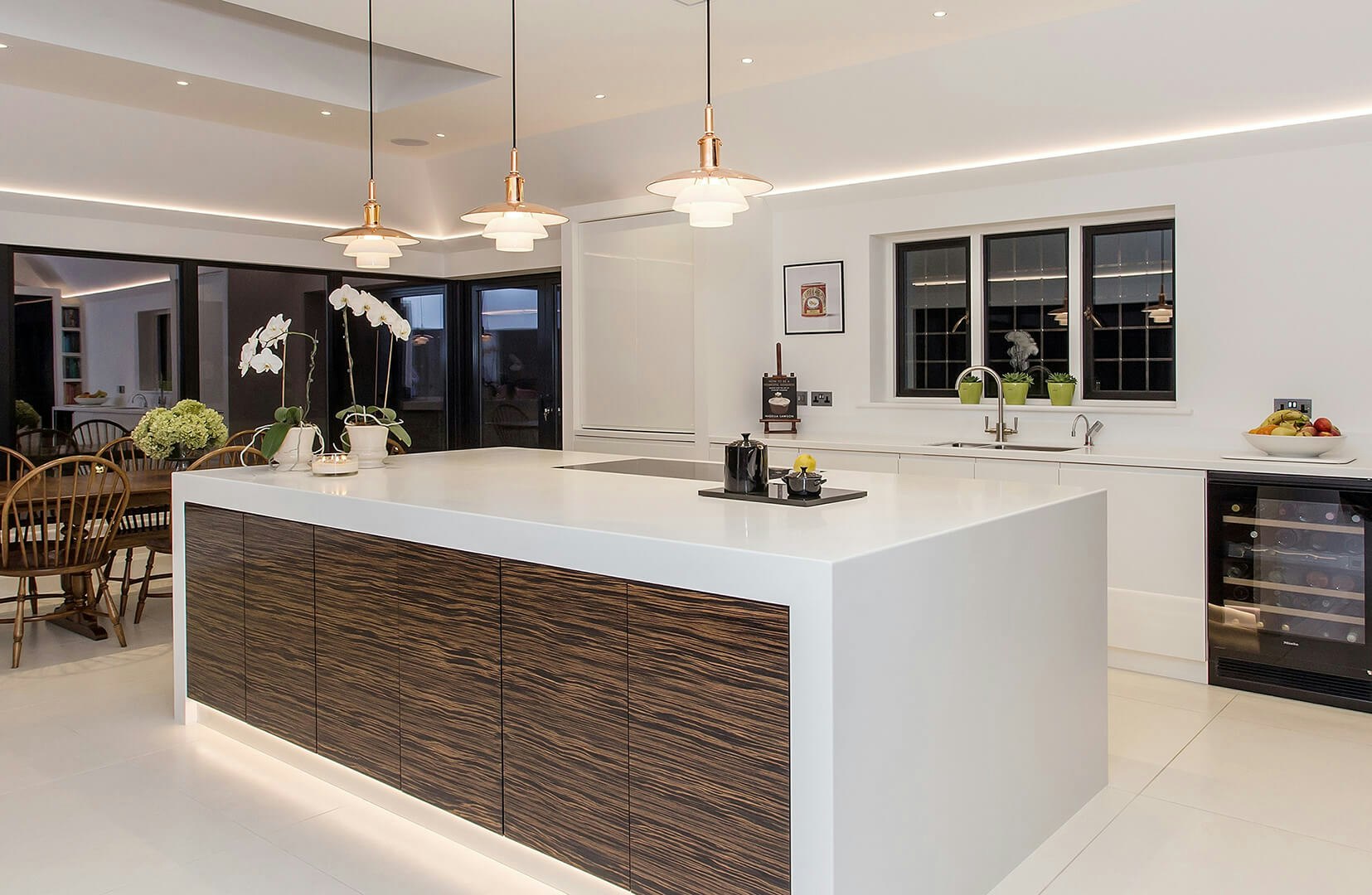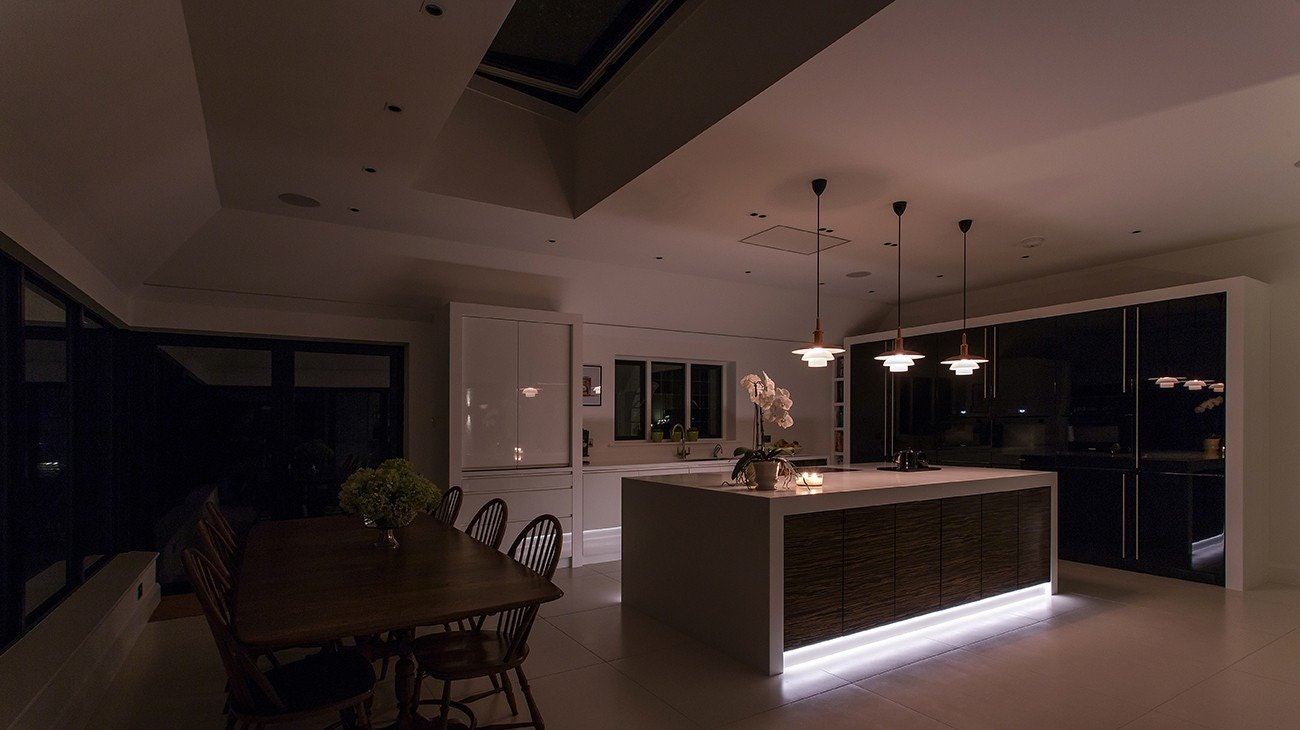
3 top tips on lighting artwork
Lighting artwork and sculptures can be an exciting challenge. One crucial element in displaying artwork, though, is to ensure it’s always seen in the best light. We’ve compiled a list of 3 top tips on lighting artwork.
Blog

Author: Greg Devenish
Open-plan kitchens are more popular than ever before, making kitchen islands the most important part of many homes. Not only do they offer an ideal place to cook, eat, and socialise, but are typically the focus area of your entire kitchen. Because of this, the lighting for your kitchen island cannot be ignored.
Like any other home lighting project, you must first start out by developing a plan. A plan that should consider many kitchen and lighting aspects, which will directly affect how you go about illuminating your kitchen island.
Not sure where to start? Then continue reading on. In this blog, we explore the basics of kitchen island lighting to give you a better understanding of what’s involved.
The size of your kitchen, along with the island you’re planning to illuminate, is one of the first things you need to consider. As much as the island is a functional space for you and your family, it’s one that provides a special look and feel. Therefore, knowing the right amount of light to use, as well as the size of each fixture based on the area of kitchen, is crucial. Otherwise, failing to account for the size of your kitchen may end up with a flooded island, or worse, hanging fixtures that leave no room for anything else -extremely impractical.
To help, a rule of thumb when planning the lights for your kitchen island is to provide anywhere from 35-50 lumens per square foot. This will leave your kitchen island with just the right amount of light for practical use, whilst reducing the complaints of headaches during dinner time.

It’s easy to get lost in all the choices that come with lighting your home. However, when your kitchen is involved, recessed lighting should be your base and primary source of light. Unlike the bedroom, where a central primary source is sufficient.
Once the base of your kitchen lighting is in place, you can move onto the kitchen island specifically. Here, we recommend selecting one of the following three options:
As the most popular and versatile of all kitchen lighting types, pendant lights offer a number of advantages. Not only can the height at which they are positioned be adjusted, but they can be extremely decorative. On top of this, the number of pendants above your kitchen island is not limited to that of a chandelier.
Essentially, this means that you can go with a combination that works best for your island. Whether that be two larger pendants, or three smaller ones that each produce fewer lumens.
Becoming more popular with kitchen islands are linear chandeliers. They can be used alongside traditional or modern interiors and are installed by wiring just one fixture rather than multiple pendants. The only downside? As a fixed linear chandelier, you may find covering a larger kitchen island proves a challenge.
You may not want any pendant lights or linear chandeliers overhanging your kitchen island. Perhaps you quite like a minimalist approach to lighting? If so, sticking to recessed lighting across your entire kitchen maybe something to consider.
As well, think about the height of your kitchen ceiling. How much room have you got to play with? If on the lower side, recessed lighting is likely your best bet as overhanging fixtures can make your space feel small.
Since this point in the blog, we’ve focused on the practical lighting that is projected downwards onto your kitchen island. However, you need to think about the whole island when exploring light.
By adding accent lighting around the underside of your kitchen island (preferably hidden underneath cabinets), you create another layer of lighting which adds to the aesthetics of your kitchen. This is known as LED profile lighting. It can also be installed to the underside of an overhanging worksurface. This aims to illuminate any cupboards on your kitchen island, whilst adding a ton of style to a contemporary kitchen – perfect for those who love to host and entertain.

Over the last 20 years, our expert team at Hampshire Light have provided lighting design schemes all across the south of England. With our complete end-to-end consultative process, expertise is lighting design, and passion to deliver solutions that work for you, we can provide a bespoke plan that enhances your space.
Looking for an award-winning lighting designer? Contact our expert team today - we’d love to help with your project.
Lighting artwork and sculptures can be an exciting challenge. One crucial element in displaying artwork, though, is to ensure it’s always seen in the best light. We’ve compiled a list of 3 top tips on lighting artwork.
More info
Let's explore how Occhio is leading the way in sustainable lighting and why their products are a perfect fit for luxury interiors.
More info